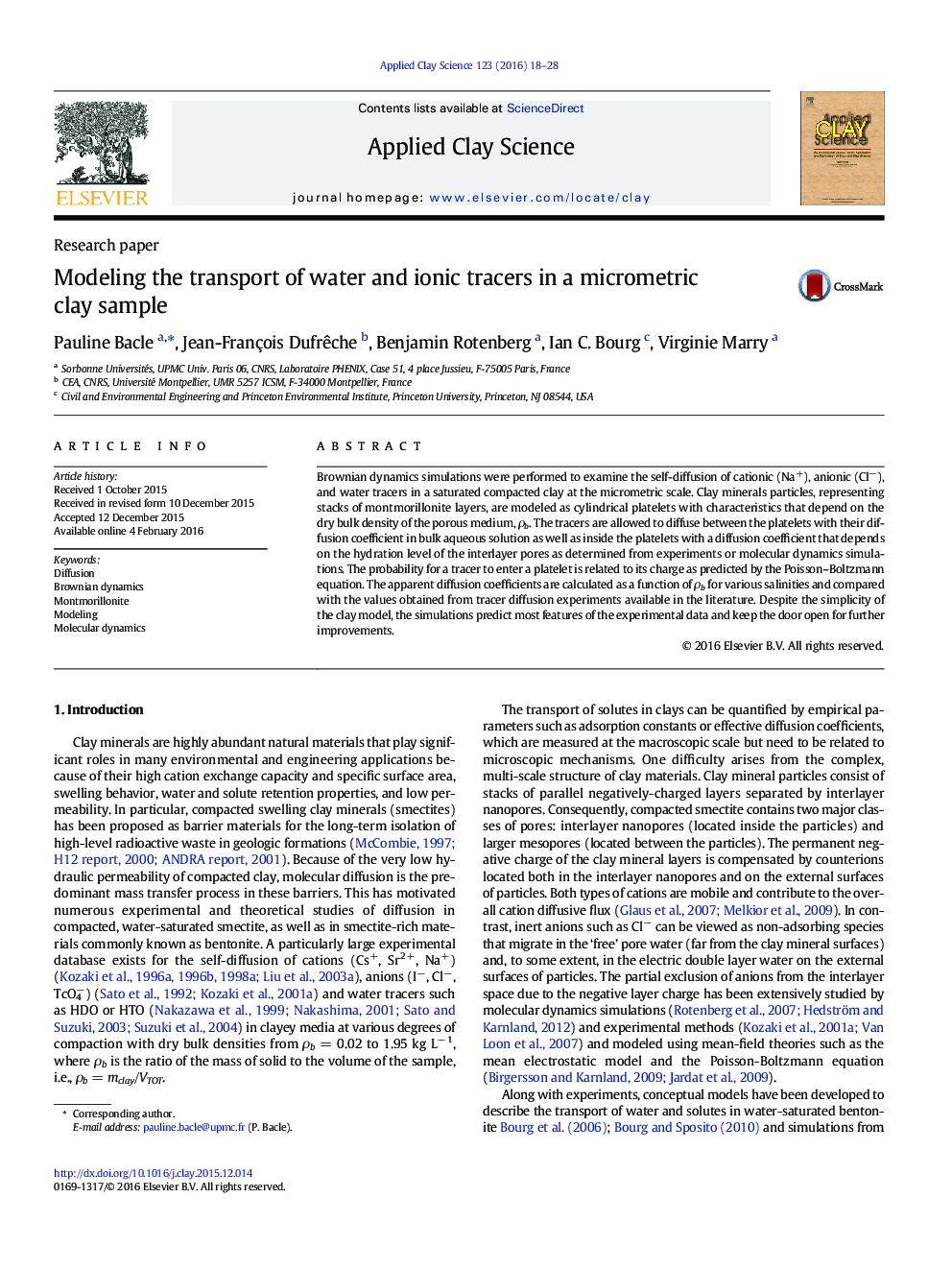| Article ID | Journal | Published Year | Pages | File Type |
|---|---|---|---|---|
| 1694113 | Applied Clay Science | 2016 | 11 Pages |
•A model for the diffusion of water and ions in clay on scales of micrometers and milliseconds is proposed.•We use Brownian Dynamics simulations to simulate the diffusion in clay.•The porous medium is described by overlapping cylindrical platelets.•Comparison between simulation and experimental data show good agreement.
Brownian dynamics simulations were performed to examine the self-diffusion of cationic (Na+), anionic (Cl−), and water tracers in a saturated compacted clay at the micrometric scale. Clay minerals particles, representing stacks of montmorillonite layers, are modeled as cylindrical platelets with characteristics that depend on the dry bulk density of the porous medium, ρb. The tracers are allowed to diffuse between the platelets with their diffusion coefficient in bulk aqueous solution as well as inside the platelets with a diffusion coefficient that depends on the hydration level of the interlayer pores as determined from experiments or molecular dynamics simulations. The probability for a tracer to enter a platelet is related to its charge as predicted by the Poisson–Boltzmann equation. The apparent diffusion coefficients are calculated as a function of ρb for various salinities and compared with the values obtained from tracer diffusion experiments available in the literature. Despite the simplicity of the clay model, the simulations predict most features of the experimental data and keep the door open for further improvements.
